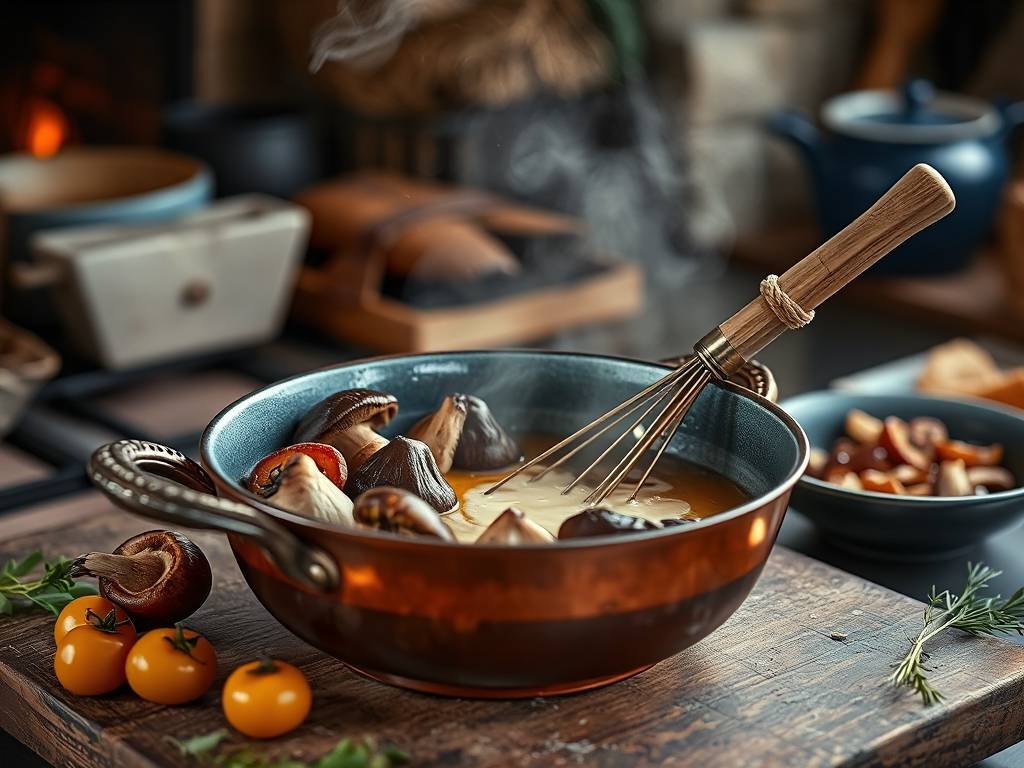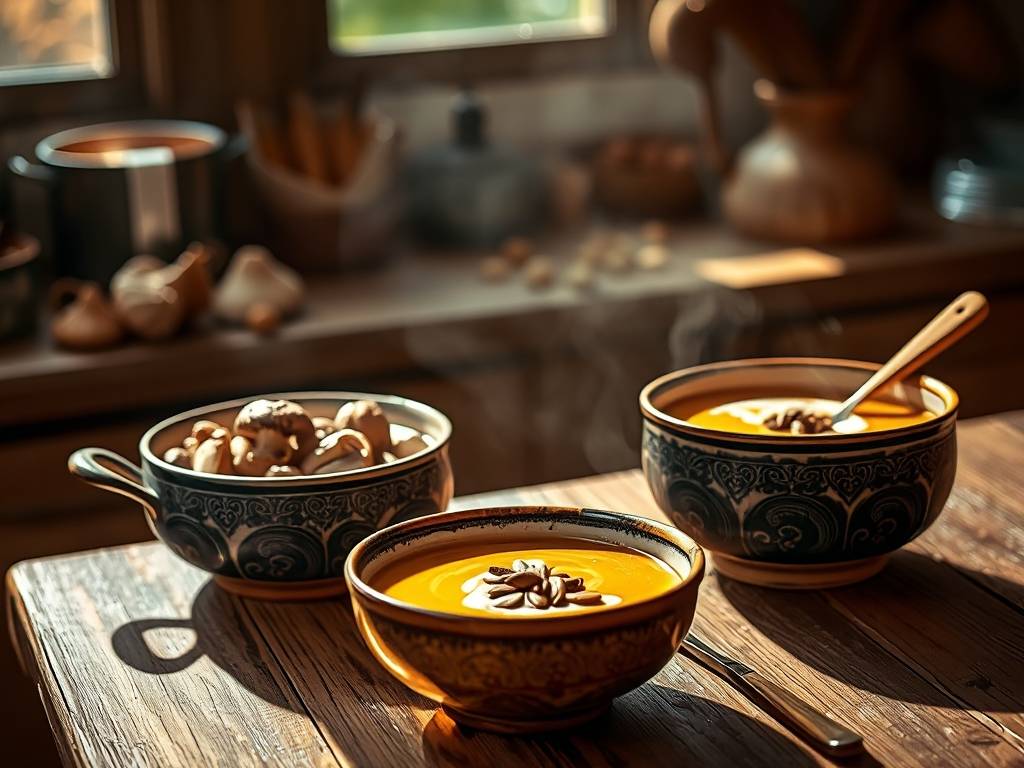The Art of Crafting Perfect Creamy Mushroom Soup: A Step-by-Step Guide
There's something profoundly comforting about a bowl of creamy mushroom soup - the earthy aroma, the velvety texture, and the rich, complex flavors that seem to warm you from the inside out. While canned versions might offer convenience, nothing compares to the depth of flavor achieved through the simple yet transformative process of sautéing fresh mushrooms and incorporating quality cream. This culinary journey demonstrates how these fundamental techniques elevate humble ingredients into an extraordinary dish that celebrates the mushroom's natural umami characteristics while creating a luxurious dining experience.
Selecting Your Mushrooms: The Foundation of Flavor
The journey to exceptional mushroom soup begins at the market. While common white button mushrooms work perfectly fine, consider exploring the diverse world of fungi available. Cremini mushrooms offer a deeper, earthier flavor than their white counterparts, while shiitake mushrooms contribute a distinctive smoky note. For truly exceptional soup, incorporate some wild mushrooms like porcini, chanterelle, or morel when in season - their intense, woodsy flavors will transform your soup into something extraordinary.
When selecting mushrooms, look for firm, dry specimens without any slimy spots or unpleasant odors. Remember that mushrooms are like sponges, so avoid washing them under running water which causes them to become waterlogged. Instead, gently wipe them clean with a damp paper towel or use a soft brush to remove any dirt. For tougher-stemmed varieties like shiitake, you may want to remove the stems entirely as they can be too fibrous for the final soup texture.

The Essential Sauté: Unlocking Umami Through Heat
The single most important step in creating deeply flavorful mushroom soup is the sauté process. This isn't merely cooking the mushrooms but transforming them through the Maillard reaction - the chemical process that creates complex flavor compounds when foods brown at high temperatures.
Begin by heating a heavy-bottomed pot or Dutch oven over medium-high heat. Add a combination of butter and olive oil (the butter contributes flavor while the oil raises the smoke point). Once the fat is hot but not smoking, add your sliced mushrooms in a single layer, being careful not to overcrowd the pan. This is crucial - overcrowding creates steam that prevents proper browning. You may need to work in batches.
Listen for that satisfying sizzle as the mushrooms hit the hot surface. Resist the urge to constantly stir them; instead, let them develop a beautiful golden-brown crust on one side before turning. This patient approach allows the mushrooms to release their moisture and then reabsorb it along with the developed flavors. You'll notice the mushrooms shrinking significantly and developing an intense, meaty aroma - this is the umami magic happening right in your pot.

As the mushrooms cook, they'll release liquid. Continue cooking until this liquid evaporates and the mushrooms begin to sizzle again in the fat, developing even more color and flavor. Season generously with salt and pepper during this process, as salt helps draw out moisture and concentrate flavor. For additional depth, consider adding minced garlic, fresh thyme, or a splash of dry sherry or white wine during the last minute of sautéing, allowing the alcohol to cook off while imparting its nuanced flavors.
Building Flavor Layers: The Supporting Cast
While mushrooms are undoubtedly the star, supporting ingredients play crucial roles in building a balanced, complex soup. After sautéing your mushrooms, set aside about a quarter of them to use as a garnish later - this provides textural contrast in the finished soup.
In the same pot, add diced onions or shallots, cooking them until translucent and fragrant. The natural sugars in alliums caramelize beautifully with the mushroom fond (those browned bits stuck to the bottom of the pan), creating another layer of flavor. For even more depth, add diced carrots and celery to create a classic mirepoix base.
Next, sprinkle flour over the vegetables to create a roux. Cook this mixture for a minute or two to eliminate the raw flour taste. The roux will later help thicken your soup and create that luxurious mouthfeel we're after. For gluten-free alternatives, you can use cornstarch or arrowroot powder mixed with cold water added later in the process.
Now, slowly incorporate your liquid base. While chicken or vegetable broth are standard choices, consider using mushroom stock for an even more intense mushroom experience. You can create this by simmering dried porcini mushrooms in water or using the soaking liquid from rehydrated dried mushrooms. The gradual addition of liquid while stirring constantly helps prevent lumps from forming and allows you to scrape up all those delicious browned bits from the bottom of the pan - this is where tremendous flavor resides.
The Cream Transformation: Achieving Luxurious Texture
After bringing your broth and vegetable mixture to a simmer and cooking until the vegetables are tender, it's time for the pièce de résistance: the cream. The choice of cream matters significantly in the final outcome. Heavy cream (with 36-40% milk fat) provides the richest texture and most luxurious mouthfeel, while half-and-half offers a lighter alternative. For those seeking dairy-free options, coconut cream can provide similar richness with a subtle tropical note that surprisingly complements mushrooms well.
Temper your cream before adding it to the hot soup to prevent curdling. Simply ladle some of the hot soup into the cream, stir to combine, then gradually incorporate this mixture back into the main pot. This gradual temperature adjustment allows the cream to integrate smoothly rather than seizing up.
Now, using an immersion blender, carefully puree the soup until perfectly smooth. Alternatively, you can work in batches with a countertop blender, being extremely cautious with the hot liquid. For those who prefer some textural interest, you might choose to blend only half the soup, leaving some mushroom pieces intact, or simply use the reserved sautéed mushrooms as a chunky garnish.
Finishing Touches: Elevating to Perfection
The final steps separate good mushroom soup from extraordinary mushroom soup. Taste and adjust seasoning, remembering that cream tends to mute flavors, so you may need additional salt. A squeeze of fresh lemon juice can brighten the rich flavors and cut through the creaminess beautifully. Fresh herbs like chopped chives, parsley, or thyme added just before serving provide both visual appeal and aromatic complexity.
For an extra touch of luxury, consider garnishing with a drizzle of truffle oil, a sprinkle of high-quality Parmesan cheese, or a dollop of crème fraîche. Serve with crusty bread for dipping or alongside a fresh salad for a complete meal.
The beauty of mushroom soup lies in its versatility. It can be elegant enough for a dinner party yet simple enough for a weeknight meal. It freezes beautifully (though best without the cream added if freezing), making it perfect for meal preparation. And perhaps most wonderfully, it demonstrates how a few fundamental techniques - proper sautéing to develop flavor and the careful incorporation of cream for richness - can transform basic ingredients into something truly extraordinary. Each spoonful tells the story of patient browning, thoughtful seasoning, and the magical alchemy that occurs when simple components are treated with respect and culinary wisdom.






发表评论